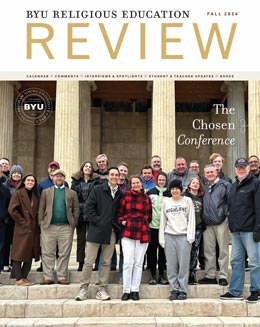The Religious Studies Center recently published Mormon’s Record: The Historical Message of the Book of Mormon, by Gregory Steven Dundas. Dundas has a PhD in Greek and Roman history from UCLA and a juris doctorate from the University of Michigan. In his study of historical sources from the classical world and the ancient Near East, he has researched ancient historians and has explored the perspectives and biases from which they wrote. Now in Mormon’s Record he brings that exploration to the work of the prophet Mormon.
Some Latter-day Saints push back when they are reminded that Mormon was the author of the Book of Mormon (aside from the small plates and the material his son Moroni added). Part of the struggle with that concept is the English word abridgment, which we find on the book’s title page. An abridgment is usually a condensed version of a single work, like a condensed dictionary or a condensed edition of a novel. Mormon’s record, in contrast, is the abridgment not of a book but of a whole national history, the thousand-year history of his people. Drawing on earlier records compiled on the large plates of Nephi, which by Mormon’s time were likely a large stack of plates, and through the inspiration of the Holy Spirit, he authored the Book of Mormon. It is named after him because he wrote it; it is in his words. Like any other author, he’s the only speaker in the book, except when he’s quoting others.
It is solely from Mormon’s record that we have knowledge of Abinadi, Alma, Helaman, Samuel, and other great people and events in the history of Lehi’s descendants. He included their words and stories in his record, but the commentary he added was not from the perspectives of those earlier people but from his own later vantage point. With his comments coming at the end of the story and having the entire course of the Lehite family’s experience before him, Mormon was in a unique position to understand the story in ways they could not. Thus, Mormon’s vision of history runs through his book. Readers know that Mormon pays little attention to times of peace and happiness, assuming, perhaps, that we know what it’s like to be happy. Instead, he pays a great deal of attention to times of dissension and warfare, likely to teach us how we can ruin our lives. The Book of Mormon is, as Dundas reminds us, “a book about failures,” the repeated failures of people to live in ways that would ultimately bring meaning and satisfaction to their lives.
The good news in all this is that Mormon had us and our happiness in mind when he wrote. He didn’t want us, including the modern descendants of his own people, to fall prey to the failures he witnessed in his family’s story. Whether we deserve it or not, he was not without hope about us, as can be seen in the frequent sermonizing in which he says, in effect, “Don’t be like the people in this book!” He knew that Jesus Christ is the key to ancient Israel’s covenant and to our well-being, and he made sure we would understand it by including in his record the magnificent Christian teachings of King Benjamin, Alma, Amulek, and others. We are blessed that Mormon’s book contains “a record of a fallen people,” and we are also blessed that it contains “the fulness of the gospel of Jesus Christ” (Doctrine and Covenants 20:9).
So how does Mormon’s historical writing stack up against the work of his ancient historian peers? That question is a primary focus in Mormon’s Record, and Dundas deals with it impressively. The first part of the book describes how ancient writers in classical and Near Eastern societies viewed history. He shows that in contrast to how most people today perceive reality, authors in ancient societies typically wrote from the point of view that the deity was at work in human events. Thus, recordkeeping and history writing were crafts that revealed the nature of the god (or gods) and placed human behavior in the context of divine purposes. This describes well the perspective of the Book of Mormon. It soon becomes obvious in Dundas’s book that Mormon’s writing fits within the context of the ancient world better than within our own. The evidence he presents is so compelling that midway through the book, readers will get the point of the last chapters before they read them.
Dundas deals with a variety of themes that can be identified in Mormon’s writing. Mormon saw God’s interaction with his people as a manifestation of the covenant, and he saw how pride, prosperity, peace, dissention, and war affect the lives of individuals and nations. Throughout the book, Dundas lets Mormon do the teaching.
Mormon’s Record: The Historical Message of the Book of Mormon is among the best studies of Mormon the historian. It is an important academic work done by a good thinker, and it will be an important addition to scholarship about the Book of Mormon. Because the message of the Restoration is true, it should not surprise us that good scholarship about it leads to greater faith. This book is no exception. Among its other contributions, it reminds us again that the Book of Mormon—a complex, compelling, and profound book—could not be a creative product of the imagination of Joseph Smith.
